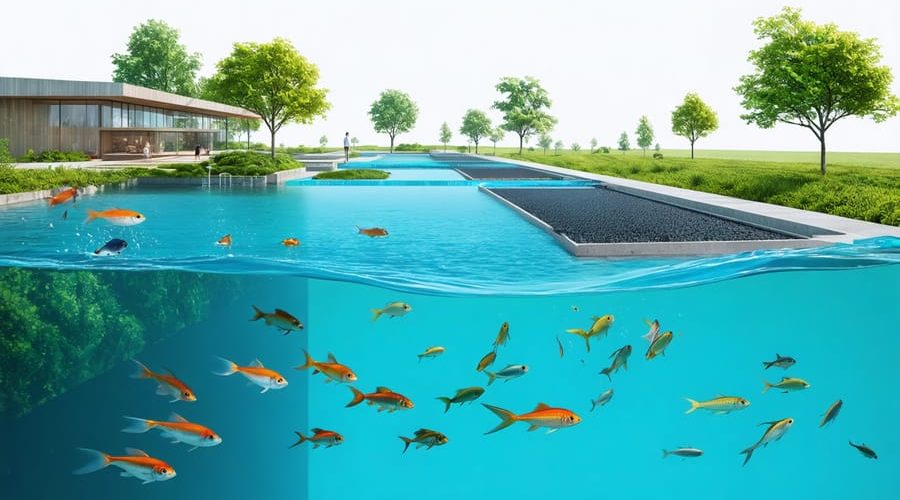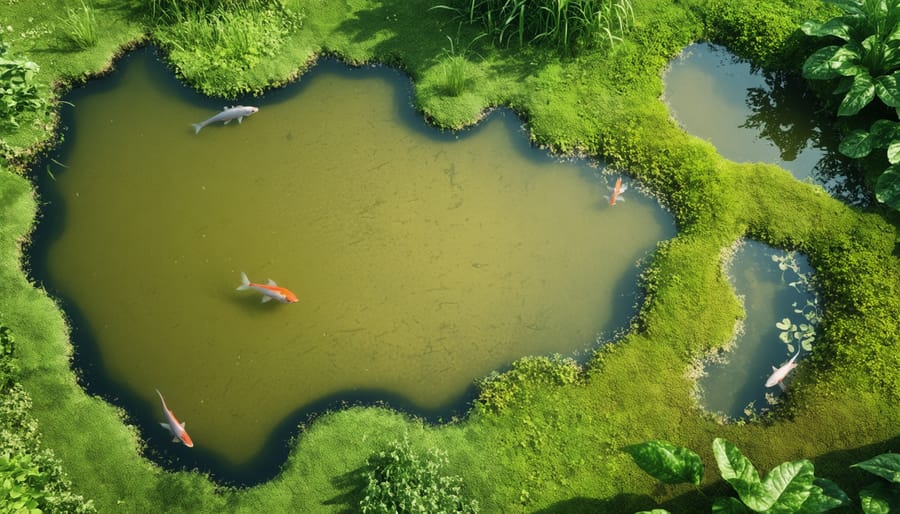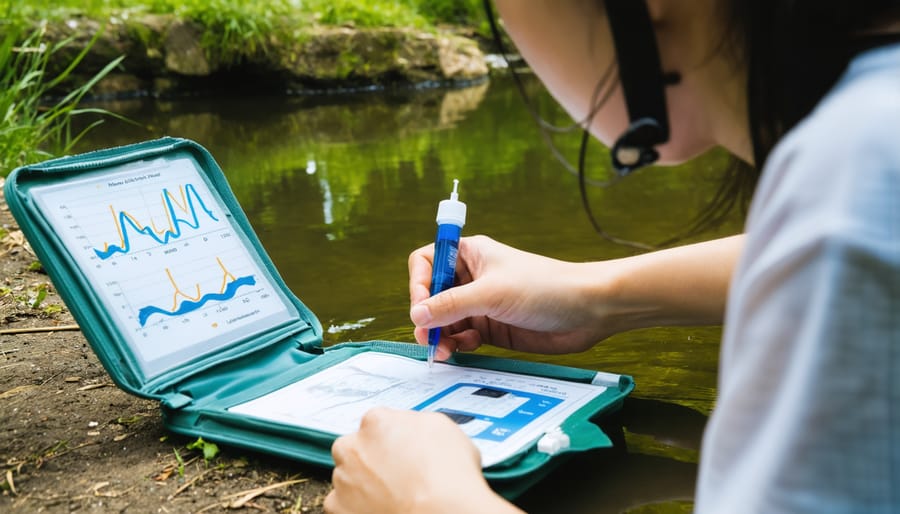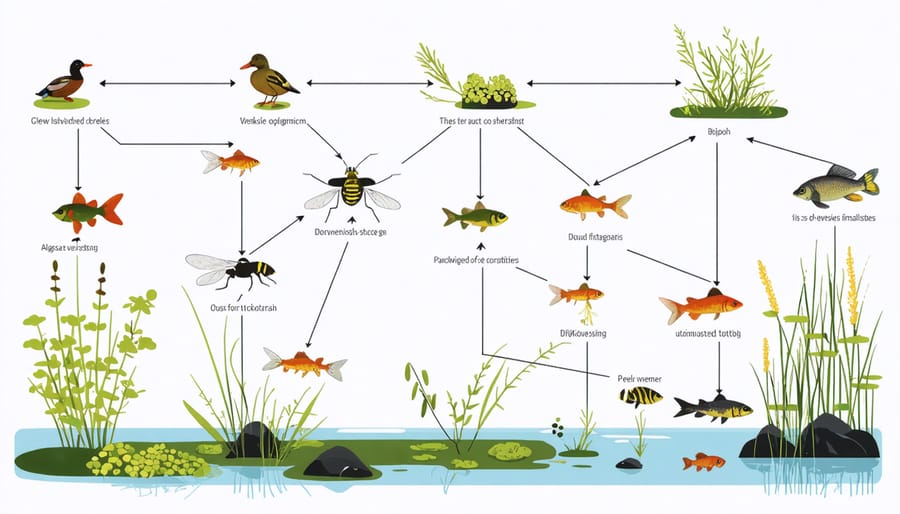
Fish Farm Success: Smart Pond Practices That Save Money and Resources
Sustainable fish farming revolutionizes aquaculture by combining environmental stewardship with profitable production methods. Creating a thriving pond ecosystem requires careful balance of natural resources, innovative technology, and responsible management practices. Modern fish farms now integrate recirculating aquaculture systems (RAS) that reduce water consumption by 90%, while biofloc technology transforms waste into valuable fish feed. These advancements make fish farming one of the most efficient forms of protein production, using significantly less land and water than traditional livestock farming.
Yet sustainability extends beyond environmental impact. Economically viable fish farms create local employment opportunities, strengthen food security, and meet growing global protein demands without depleting ocean stocks. By implementing integrated multi-trophic aquaculture systems, farms cultivate multiple species that work symbiotically – fish, shellfish, and aquatic plants support each other’s growth while minimizing waste and maximizing resource efficiency.
This holistic approach to aquaculture demonstrates how innovation and environmental responsibility can coexist with commercial success, setting new standards for sustainable food production in the 21st century.
Setting Up a Sustainable Fish Pond System
Choosing the Right Location and Design
Selecting the right location for your fish farm is crucial for long-term sustainability. Start by analyzing your land’s topography – gentle slopes are ideal as they allow for natural water flow and drainage. The soil type matters too; clay-rich soils naturally retain water better than sandy soils, reducing the need for artificial liners.
Consider your water source carefully. You’ll need reliable access to clean water, whether it’s from a well, spring, or municipal supply. The site should be away from flood-prone areas and potential sources of contamination like agricultural runoff or industrial zones.
When designing your ponds, aim for depths between 4-6 feet to maintain stable water temperatures and provide adequate space for fish. Incorporate multiple pond sizes to accommodate different growth stages and species. Include settling areas for waste management and consider implementing a recirculating system to conserve water.
Natural windbreaks like trees or shrubs can help regulate water temperature and reduce evaporation, but ensure they’re far enough from pond edges to prevent leaf litter accumulation. Remember to plan for easy access to ponds for maintenance and harvesting.

Natural Filtration Systems
Natural filtration systems offer an eco-friendly approach to maintaining water quality in fish farms. By implementing natural filtration using pond plants and beneficial bacteria, you can create a self-sustaining ecosystem that reduces the need for chemical treatments and mechanical filtration.
Water plants like cattails, water hyacinths, and duckweed act as natural filters by absorbing excess nutrients and providing shelter for beneficial bacteria. These bacteria break down fish waste and organic matter, converting them into nutrients that the plants can use. This creates a beautiful cycle where waste becomes food for the system rather than a problem to manage.
Setting up plant zones around your pond’s edges and in floating islands helps maximize filtration efficiency. Start with hardy species that are native to your area, as they’ll adapt better to local conditions. Remember to maintain a balance – too many plants can reduce oxygen levels, while too few won’t provide adequate filtration.
For best results, combine different types of plants: submerged, floating, and marginal varieties. This creates multiple layers of filtration while adding visual interest to your fish farm.
Water Management for Long-Term Success
Water Quality Monitoring
Regular water quality monitoring is essential for maintaining a healthy and sustainable fish farm. The good news is that you don’t need to be a scientist to keep your water parameters in check. A basic water testing kit from your local aquarium store can help you monitor crucial elements like pH, ammonia, nitrites, and dissolved oxygen.
Start by testing your water parameters at least once a week. pH levels should typically remain between 6.5 and 8.5, depending on your fish species. Use a digital pH meter or test strips for quick readings. For ammonia and nitrites, which can be toxic to fish, liquid test kits provide accurate results. These levels should always remain close to zero.
Dissolved oxygen is vital for fish survival. You can maintain adequate levels by ensuring proper aeration through air stones or paddle wheels. A simple dissolved oxygen meter can help you monitor these levels, which should stay above 5 mg/L for most fish species.
Temperature monitoring is equally important. Use a reliable thermometer and check readings daily, especially during seasonal changes. Sudden temperature fluctuations can stress your fish and make them more susceptible to diseases.
Keep a logbook of all your water quality readings. This helps you spot trends and potential problems before they become serious issues. If any parameters fall outside the acceptable range, take immediate corrective action through water changes, adjusting aeration, or adding appropriate water treatments.

Water Conservation Techniques
Efficient water management is crucial for sustainable fish farming, and implementing effective water conservation methods can significantly reduce your environmental impact while cutting operational costs. Start by installing water monitoring systems to track usage and detect leaks early. A simple flow meter can help you identify unusual water consumption patterns that might indicate problems.
Consider implementing a recirculating aquaculture system (RAS) that filters and reuses water instead of constantly replacing it. These systems can reduce water usage by up to 90% compared to traditional methods. Adding rain catchment systems to collect natural precipitation can supplement your water supply during dry periods.
Regular maintenance of filtration systems prevents clogging and ensures optimal water quality with minimal waste. Use shade covers or floating plants to reduce evaporation, especially during hot seasons. This natural approach not only conserves water but also provides additional benefits for your fish.
Don’t forget to schedule regular inspections of pipes and connections to prevent leaks. Even small drips can add up to significant water loss over time. Consider installing automated systems that adjust water flow based on oxygen levels and fish activity, ensuring you’re using only what’s necessary for healthy fish production.
Fish Stock Management
Selecting Compatible Species
Creating a balanced fish ecosystem is like putting together a perfectly harmonious underwater community. The key is selecting fish species that not only get along but also contribute to the overall health of your farm. Start with hardy fish like tilapia or carp as your foundation species – they’re excellent at controlling algae and can handle varying water conditions.
Consider creating a multi-level system where different species occupy different water depths. For example, surface-feeding fish like silver carp can work alongside bottom-feeders like catfish, maximizing your farm’s efficiency. This approach helps utilize all available space while maintaining natural balance.
When choosing compatible species, think about their feeding habits and environmental requirements. Some winning combinations include tilapia with catfish, or carp with perch. These pairings work because they occupy different niches in the water column and have complementary feeding patterns.
Pay attention to stocking densities – overcrowding leads to stress and poor water quality. A good rule of thumb is to start conservatively and monitor how your fish interact. Some species, like grass carp, are excellent at controlling aquatic vegetation, while others, like freshwater prawns, can help clean up excess feed and debris.
Remember that temperature preferences should align among your chosen species. Warm-water fish like tilapia shouldn’t be mixed with cold-water species like trout, as they have different optimal temperature ranges for growth and survival.
Stocking Density Guidelines
Getting your stocking density right is crucial for maintaining a healthy and sustainable fish farm. As a general rule of thumb, aim for 1-2 pounds of fish per 100 gallons of water for beginners. This conservative approach helps maintain good water quality and reduces stress on your filtering system.
For more experienced fish farmers, you can gradually increase density to 3-4 pounds per 100 gallons, but only with proper aeration and filtration in place. Remember that different fish species have varying space requirements. For example, tilapia can handle higher densities than trout, which need more space and oxygen.
To calculate your pond’s carrying capacity, multiply your pond’s volume in gallons by the recommended density ratio. For instance, a 1,000-gallon pond could sustainably support 10-20 pounds of fish at the beginner level.
Keep these factors in mind when determining your stocking density:
– Water temperature and oxygen levels
– Fish species and their mature size
– Filtration capacity
– Feeding schedule
– Local climate conditions
Monitor your fish regularly for signs of overcrowding, such as:
– Fish gasping at the surface
– Reduced growth rates
– Increased disease occurrence
– Poor water quality
Start conservatively and increase gradually as you gain experience. It’s better to understock initially than to face the challenges of an overcrowded system.
Natural Feeding Solutions

Growing Your Own Fish Food
Growing your own fish food is a fantastic way to create a self-sustaining pond system while reducing costs and ensuring the highest quality nutrition for your fish. One of the easiest methods is cultivating duckweed, a tiny floating plant that naturally multiplies in still water. Simply introduce a small amount to your pond, and it will quickly establish itself as a renewable food source.
Another effective approach is creating a separate “nursery” pond for growing aquatic insects and microorganisms. Stock this smaller pond with beneficial plants like water lettuce and hornwort, which provide excellent breeding grounds for natural fish food. Within weeks, you’ll notice an abundance of water fleas, mosquito larvae, and other tiny creatures that make perfect fish food.
Composting near your pond can also attract beneficial insects that will naturally fall into the water, providing an additional food source. Consider planting flowers and herbs around the pond’s edge to attract more insects and create a diverse ecosystem.
For those with extra space, setting up a worm farm is incredibly rewarding. Red worms are particularly nutritious for fish and easy to cultivate using kitchen scraps. When chopped into small pieces, these worms make an excellent supplementary feed that your fish will love.
Remember to start small and gradually expand your food-growing operations. Monitor how your fish respond to different food sources and adjust accordingly. The key is creating a balanced system where natural food sources complement any commercial feed you might still use.
Supplemental Feeding Strategies
A successful fish farm relies on striking the perfect balance between natural food sources and supplemental feeding. Natural pond ecosystems provide valuable nutrients through algae, aquatic plants, and small organisms, but these alone usually aren’t enough to support optimal fish growth and health in a farm setting.
To maximize natural food sources, maintain a healthy pond ecosystem by encouraging beneficial algae growth and introducing water plants that provide shelter for small organisms. These natural food webs help reduce feed costs while providing essential nutrients that commercial feeds might miss.
When selecting commercial feeds, choose high-quality options with protein levels appropriate for your fish species. For most farm fish, feeds containing 28-32% protein are suitable. Break up feeding into 2-3 sessions daily, offering only what your fish can consume within 15-20 minutes to prevent waste and water pollution.
Consider implementing these sustainable feeding practices:
– Use floating feeds to monitor consumption easily
– Adjust feeding rates based on water temperature and fish activity
– Incorporate locally sourced ingredients when possible
– Rotate feed types to ensure balanced nutrition
– Use automatic feeders to maintain consistent schedules
During warmer months, fish naturally consume more food, while their appetite decreases in cooler weather. Adjust portions accordingly to avoid overfeeding and waste. Regular monitoring of fish growth and behavior helps fine-tune your feeding strategy, ensuring both environmental sustainability and economic efficiency.
Keep detailed feeding records to track consumption patterns and optimize your feeding schedule over time. This data-driven approach helps maintain the delicate balance between providing adequate nutrition and minimizing environmental impact.
Sustainable fish farming is within reach for every pond enthusiast, whether you’re just starting or looking to improve your existing setup. By implementing the practices we’ve discussed – from water conservation and waste management to natural feed alternatives and ecosystem balance – you can create a thriving, environmentally responsible fish farm that benefits both your pocket and the planet.
Remember that sustainability isn’t just about environmental impact; it’s about creating a system that can sustain itself over time. Start small by incorporating one or two practices, such as installing a rainwater collection system or introducing aquatic plants for natural filtration. As you become more comfortable, gradually add more sustainable elements to your operation.
Monitor your progress regularly, and don’t be afraid to adjust your approach based on what works best for your specific situation. Share your successes and challenges with other pond enthusiasts – learning from each other’s experiences is a valuable part of the journey toward sustainability.
By taking these steps, you’re not just creating a more efficient fish farm; you’re contributing to a larger movement toward responsible aquaculture. Your efforts, combined with those of other conscious pond keepers, make a real difference in preserving our water resources and ensuring the future of fish farming for generations to come.
Let’s make sustainable fish farming the standard, not the exception. Start your sustainability journey today – your pond, your wallet, and the environment will thank you for it.
